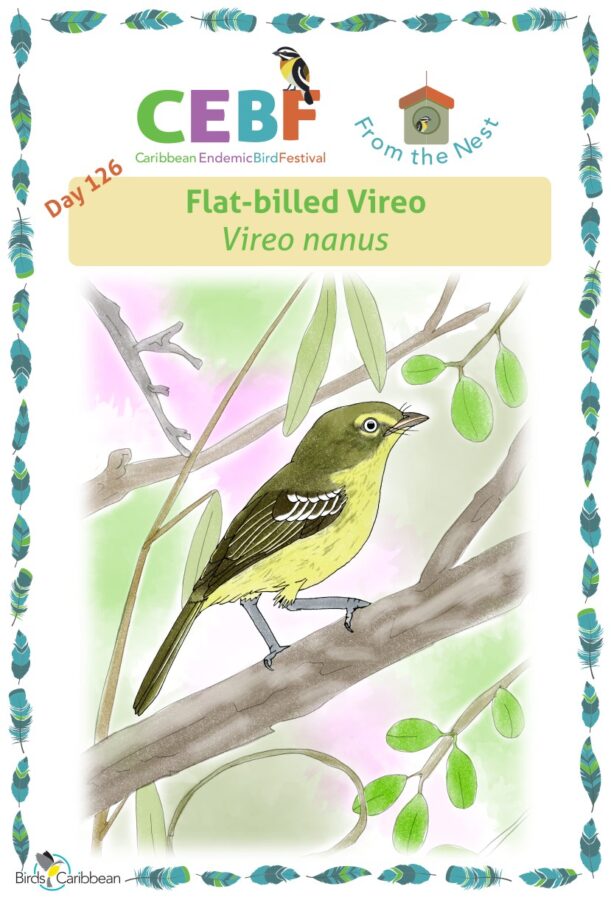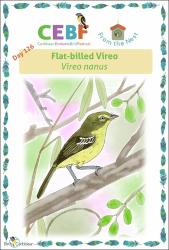/admin/item?itemID=dde0c42b-4dc6-4ee3-a09b-cbca157914a9
Endemic bird of the day : Flat-billed Vireo
Type of Access
OpenMaterial Type
Infographic - PosterLanguage
EnglishCollection
- Colección general [2237]
- Recursos educativos [782]
Metadata
Show full item record| Abstract: | Caribbean Endemic Bird Festival (CEBF) day 126 poster, dedicated to the Flat-billed Vireo. There seems to be no braver small bird than the Flat-billed Vireo (Vireo nanus). It is highly territorial and will respond to any potential intruder, no matter the size, with acute shaking of its body and a harsh scolding note. The Flat-billed Vireo is endemic to the island of Hispaniola and is locally distributed in both the Dominican Republic and Haiti. It is a grayish-green bird with duller, yellow-washed underparts, two bold white wing bars, and whitish eyes. It has a noticeably wide, flattened, and triangular dark gray bill. Although the plumage is rather plain it has a very cheerful, whistling song “wi-wi-wi-wi-wi,” and a more rapid chattering “weet-weet-weet…” Like other vireos they are more often heard than seen, unless you lure it out of the dense vegetation by imitating its call. It is a bird of dense lowland scrubby habitats— usually the thick underbrush in a dry forest on limestone floor. For this reason the Flat-billed Vireo belongs to a particular group of vireos called the “scrub vireos.” But it has also been recorded at 1,200m above sea level. It is usually seen moving low above the ground foraging for small fruits and insects; sometimes, the species even descends to the ground to feed. The Flat-billed Vireo will also catch flying insects out of the air. This could explain an old debate, which argued that this vireo was actually a flycatcher, and should be placed in the genus Empidonax. Later on, it was finally placed in the vireo family in the genus Vireo. Like the common name implies, its peculiar flattened, broad-based bill confused ornithologists for quite some time. The specific name “nanus” depicts its already mentioned small size (dwarf). The breeding season runs from February to June. The female lays two white, unmarked or with light gray markings at blunt end, eggs in a cup shaped nest. Nest is made of plant fibers and sometimes horsehair. The local name “Cigüita Juliana,” as Annabelle Dod called it in the first book on the birds of the Dominican Republic (first ever written in Spanish), links its relationship with the other resident (and well known) vireo, the “Julián Chiví” (Black-whiskered Vireo), which actually has a truly onomatopoeic name. As a complement to the poster, a coloring sheet is included. |
| Author(s): | BirdsCaribbean
|
| Date: | 2023 |
| Published: | BirdsCaribbean |
| Citation: | BirdsCaribbean (2023). Endemic bird of the day: Flat-billed Vireo. From the Nest (Day 126). BirdsCaribbean. Recuperado de: |
| URI: | https://bvearmb.do/handle/123456789/4016
|
Afiche / Poster



